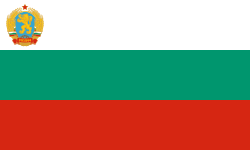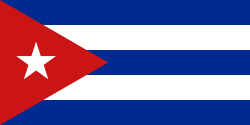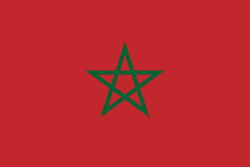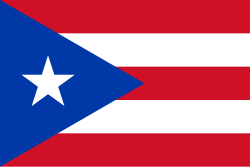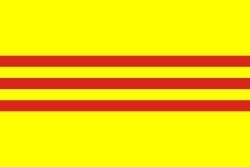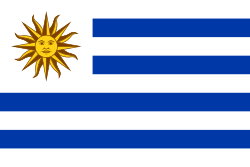Fäktning vid olympiska sommarspelen 1960
| Fäktning | |||
| Information | |||
|---|---|---|---|
| Datum | 29 augusti–8 september 1960 | ||
| Nationer | 42 | ||
| Deltagare | 344 | ||
| Grenar | 8 | ||
| Anläggning | Palazzo dei Congressi | ||
| |||
| |||
Vid olympiska sommarspelen 1960 i Rom avgjordes åtta grenar i fäktning, sex för män och två för kvinnor, och tävlingarna hölls mellan 29 augusti och 8 september 1960 i Palazzo dei Congressi. Antalet deltagare var 344 tävlande från 42 länder.
Medaljfördelning
| Medaljfördelning | |||||
|---|---|---|---|---|---|
| Placering | Nation | Totalt | |||
| 1 | 3 | 2 | 2 | 7 | |
| 2 | 2 | 2 | 0 | 4 | |
| 3 | 2 | 1 | 3 | 6 | |
| 4 | 1 | 0 | 1 | 2 | |
| 5 | 0 | 2 | 0 | 2 | |
| 6 | 0 | 1 | 0 | 1 | |
| 7 | 0 | 0 | 1 | 1 | |
| 0 | 0 | 1 | 1 | ||
Medaljörer
Herrar
Damer
| Gren | Guld | Silver | Brons |
| Florett Detaljer... | Adelheid Schmid | Valentina Rastvorova | Maria Vicol |
| Florett lag Detaljer... | Valentina Prudskova | Györgyi Szekely-Marvalics | Bruna Colombetti |
Deltagande nationer
Totalt deltog 344 fäktare (266 män och 78 kvinnor) från 42 länder vid de olympiska spelen 1960 i Rom.
|
|
Källor
- ”Fencing at the 1960 Roma Summer Games”. Sports Reference. Arkiverad från originalet den 4 april 2009. https://web.archive.org/web/20090404194931/http://www.sports-reference.com/olympics/summer/1960/FEN/. Läst 5 december 2011.
- Den här artikeln är helt eller delvis baserad på material från engelskspråkiga Wikipedia, tidigare version.
Externa länkar
 Wikimedia Commons har media som rör Fäktning vid olympiska sommarspelen 1960.
Wikimedia Commons har media som rör Fäktning vid olympiska sommarspelen 1960.
| ||||||||||||||
| ||||||||
Media som används på denna webbplats
Pictograms of Olympic sports - Fencing. This is unofficial sample picture. Images of official Olympic pictograms for 1948 Summer Olympics and all Summer Olympics since 1964 can be found in corresponding Official Reports.
Black&white version of Image:Olympic Rings.svg to use in lists where the colored version is too eye-catching
Olympic Rings without "rims" (gaps between the rings), As used, eg. in the logos of the 2008 and 2016 Olympics. The colour scheme applied here was specified in 2023 guidelines.
Olympic Rings without "rims" (gaps between the rings), As used, eg. in the logos of the 2008 and 2016 Olympics. The colour scheme applied here was specified in 2023 guidelines.
Författare/Upphovsman: B1mbo, Licens: CC BY-SA 2.5
Drawing of a gold medal, based on Olympic rings.svg.
Författare/Upphovsman: B1mbo, Licens: CC BY-SA 2.5
Draw of a silver medal, based in Olympic rings.svg.
- The joining of the rings is not correct drawn.
Författare/Upphovsman: B1mbo, Licens: CC BY-SA 2.5
Drawing of a bronze medal, based on Olympic rings.svg.
(c) I, Cmapm, CC BY-SA 3.0
The flag of the Soviet Union (1955-1991) using a darker shade of red.
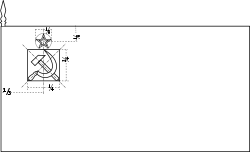
(c) I, Cmapm, CC BY-SA 3.0
The flag of the Soviet Union (1955-1991) using a darker shade of red.

Government Ensign of Hungary, flown by state-owned, non-military vessels from 1957 to 1990.
Flag of the unified Team of Germany for the Olympic Games, 1960–1968.
Flag of Romania (24 September 1952 - 21 August 1965)

Construction sheet of the Flag of Romania as depicted in Decree nr. 972 from 5 November 1968.
- l = 2/3 × L
- C = 1/3 × L
- S = 2/5 × l
The civil ensign and flag of Belgium. It is identical to Image:Flag of Belgium.svg except that it has a 2:3 ratio, instead of 13:15.
Författare/Upphovsman: Scroch, Licens: CC BY-SA 4.0
National Flag of the People's Republic of Bulgaria (1948-1968). Tha flag has got the coat-of-arms from 1948
bendera Indonesia
Flag of Israel. Shows a Magen David (“Shield of David”) between two stripes. The Shield of David is a traditional Jewish symbol. The stripes symbolize a Jewish prayer shawl (tallit).
Flag of the Socialist Federal Republic of Yugoslavia (1946-1992).
The design (blazon) is defined in Article 4 of the Constitution for the Republic of Yugoslavia (1946). [1]
Flag of the Socialist Federal Republic of Yugoslavia (1946-1992).
The design (blazon) is defined in Article 4 of the Constitution for the Republic of Yugoslavia (1946). [1]
The Canadian Red Ensign, the national flag of Canada from 1957 to 1965. (see: the Canadian Red Ensign on the Register of Arms, Flags and Badges)
The Canadian Red Ensign, the national flag of Canada from 1957 to 1965. (see: the Canadian Red Ensign on the Register of Arms, Flags and Badges)
Flag of Mexico (1934-1968)
Författare/Upphovsman: Gutten på Hemsen, Licens: CC0
Flag of Norway with colors from the previous version on Commons. This file is used to discuss the colors of the Norwegian flag.
Flag of Portugal, created by Columbano Bordalo Pinheiro (1857–1929), officially adopted by Portuguese government in June 30th 1911 (in use since about November 1910). Color shades matching the RGB values officially reccomended here. (PMS values should be used for direct ink or textile; CMYK for 4-color offset printing on paper; this is an image for screen display, RGB should be used.)
Författare/Upphovsman: SanchoPanzaXXI, Licens: CC BY-SA 4.0
Flag of Spain during the Spanish State. It was adopted on 11 October 1945 with Reglamento de Banderas Insignias y Distintivos (Flags, Ensigns and Coats of Arms Bill)
Flag of Tunisia until 1999.
Flag of the Republic of Venezuela (1930-2006)
Flag of the Republic of Venezuela (1930-2006)
Flag of Romania (24 September 1952 - 21 August 1965)

Construction sheet of the Flag of Romania as depicted in Decree nr. 972 from 5 November 1968.
- l = 2/3 × L
- C = 1/3 × L
- S = 2/5 × l
Det är enkelt att lägga till en ram runt den här bilden
Författare/Upphovsman: Scroch, Licens: CC BY-SA 4.0
National Flag of the People's Republic of Bulgaria (1948-1968). Tha flag has got the coat-of-arms from 1948

















